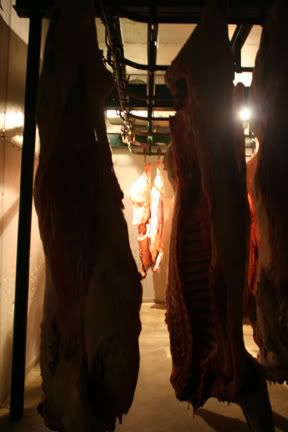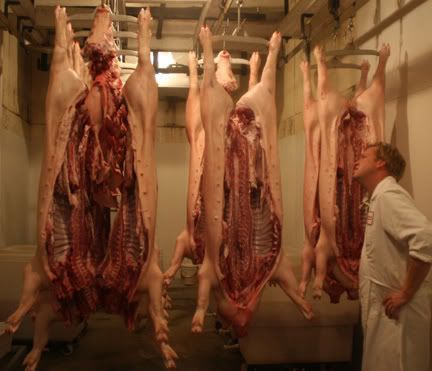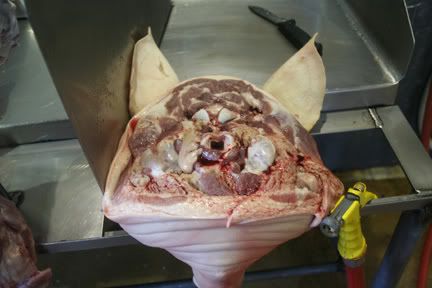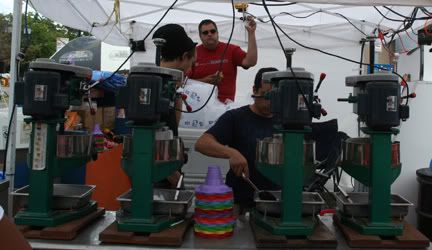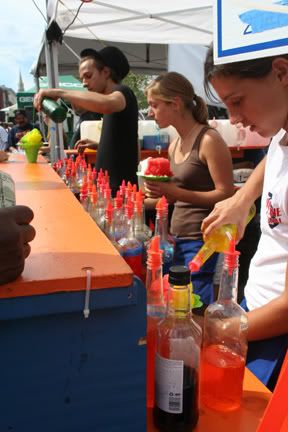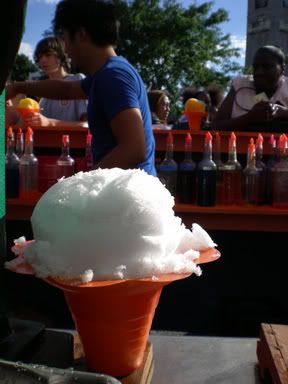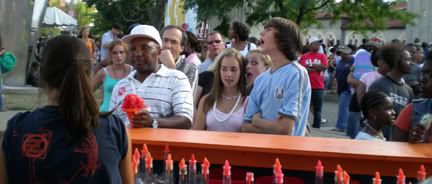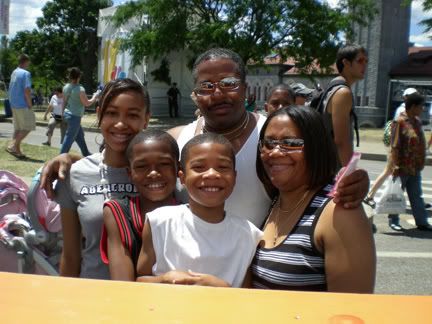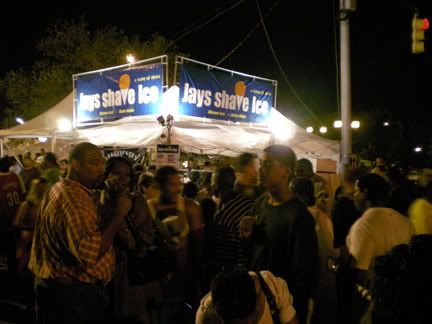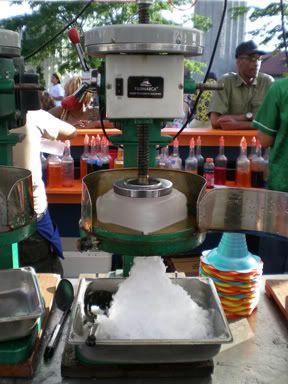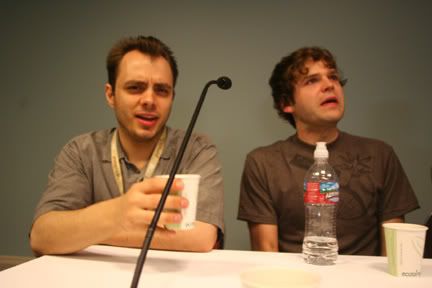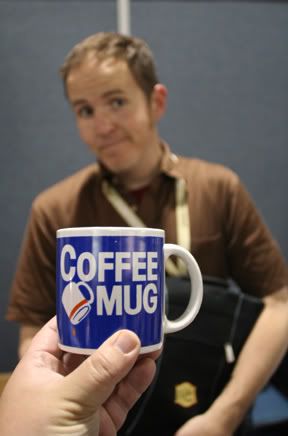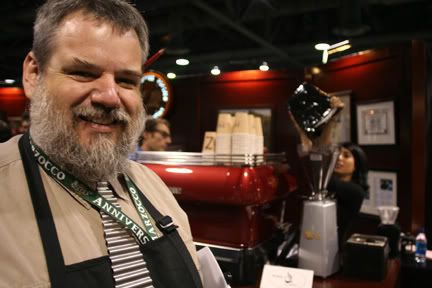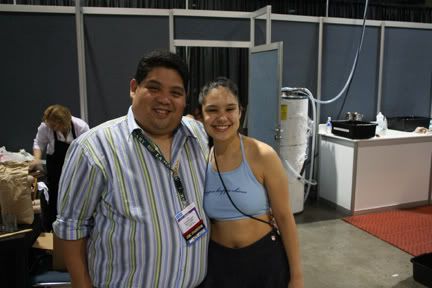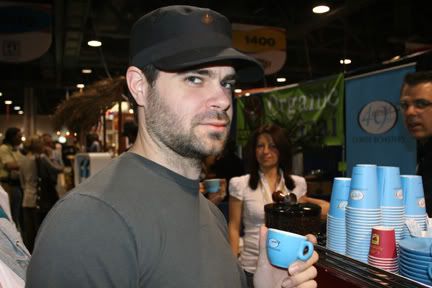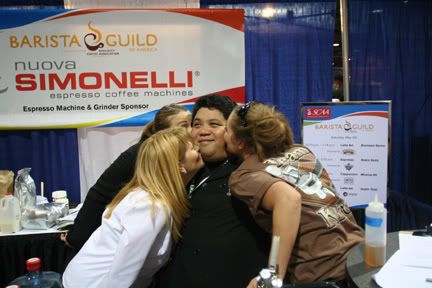We visited the processing plant at Locust Point Farm in Elkton, Maryland a week after visiting the Meat Locker. I originally started writing this post immediately after that visit.
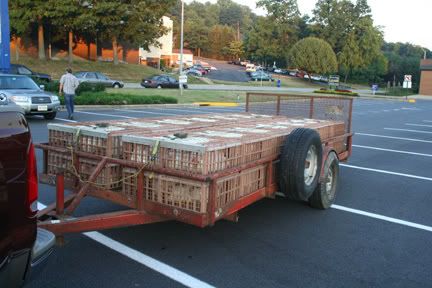
The chickens, all 275 of them, ready to go for a ride.
I am a barista.
I am a butcher.
I am the harbinger of Death.
I am standing there, in my ubiquitious black Polo t-shirt, black short and New Balance Shoes. The concrete floor beneath my feet is a cold reminder of the horror I have become. The black-handled curved blade boning knife whips in a frenzy. At the top of my game, it's three quick cuts. At my pinnacle, it's two. At my worst, it's five cuts plus some sawing, some hacking and/or some chopping.
I feel dirty and I'm covered in a grotesque haze of guts and carcasses juices sprayed onto my once clean and pristine black uniform. Had I known what I was to become, I would have dressed differently. Perhaps some work boots, Carhartt jeans and workshirt to keep the slime off my exposed flesh.
In my continuing quest to learn about locally grown and produced foods, we've ventured to the Northeastern tip of Maryland to Locust Point Farms in Elkton where we've brought 275 chickens to slaughter at the hands of a very friendly Mennonite family.
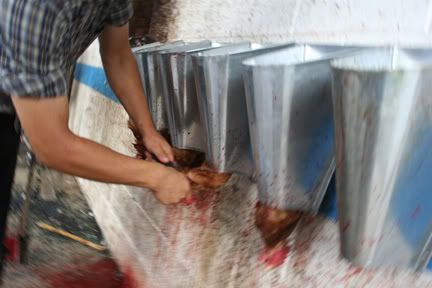
And so it begins with the flick of a sharp knife.
As an omnivore, we eat meat. Meats of all kinds. I handle chicken all the time. I've become accustomed to buying whole chickens and butchering them at home to save some money and understand the chicken. But chicken is supposed to be the cold meat we buy at the store, not the warm flesh it is in my hands. Until now, the warmest chicken I've held was made for me by a guy named Popeye.
The slaughter of any animal is a gruesome experience. It's real. Real Death. To see the neck sliced, its' blood draining and the bird flailing about in denial of fate is nothing short of real. To say it's ugly is a lie. It's horrific. There's nothing pretty about death. But it's what must be done in order for us to live.
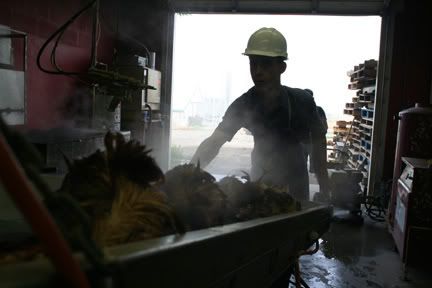
After being immersed in a hot water bath, the chickens are loaded on a conveyor.
The processing of chickens at Locust Point is done by hand. Unlike the mechanized utility of commercial plants like those run by Purdue, the Locust Point plant is small and family-run. Family members handle everything from slaughter to defeathering to dressing the birds.
Once slaughtered, the chickens are dipped in a 140 degree Fahrenheit water bath to loosen the feathers. Then they're placed in what one can only describe as a washing machine with rubber fingers set on spin, that removes the feathers and outer skin. Once the feathers have been removed, the carcass is hung and the oil gland is removed, the butt is drilled out, the internal organs are removed by hand and then anything left in the body cavity is forcibly vacuumed out. And I do mean forcibly.
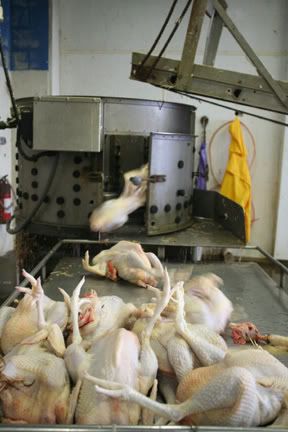
Where their feathers are removed.
Once cleaned of its' internals, the hanging chickens continue down the production line through a water shower to rinse them off, then over to the finishing table where they come off the hangers and slide down to the table where I await them with blade in hand.
For our batch of soup chickens and roasters, it's up to myself and Mariano to cut off the feet. It looks simple and the father makes it look like easy work. But actual practice is something else, especially with the soup chickens.
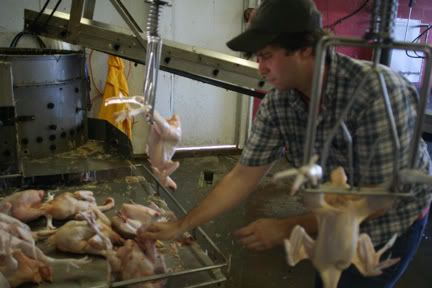
Then hung onto the processing line.
The soup chickens are older. They're old laying hens that have lived past their prime production life and can now continue on their journey in someone's (grandma's?) chicken noodle soup. Since they're older, they're tougher and harder to slice through. It starts off as clumsy work. Sawing, hacking, whittling - it's tough to make a clean cut through the joint and I fumble and falter a bit. When the young roasting chickens arrive it's amazing to feel the difference. The joints are young, tender and, therefore, easy pickings. I'll admit, I can't help but wonder if this is how it feels to chop up humans, a la Tony Soprano. And was Ralph Cifaretto harder to cut up than a young guy because of the age factor, like the chickens?
About twenty chickens into my slaughter, I start getting the hang of it. Slice, slice, slice and that leg pops right off. The joint is clean - just how you'd expect the end of a drumstick to look. Gosh, I feel like a professional. If I had access to a band saw, I might actually go berzerk.
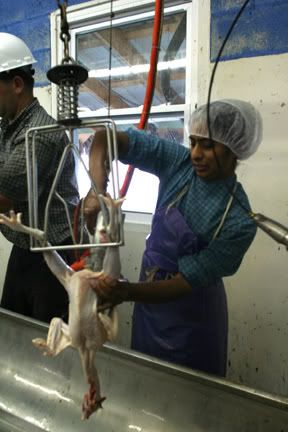
First, the oil gland is cut off and then the body cavity is opened with this drill.
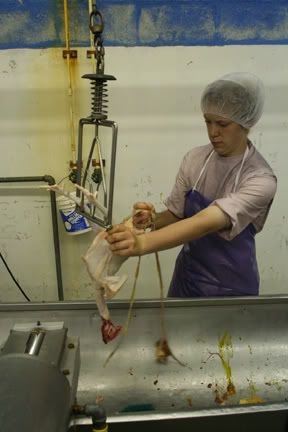
The internal organs are pulled out by hand.
I started off smelling fresh and looking trim in my nice, clean clothes. The longer I stand around in the facility, the more water and chicken bits are splashed on me from every direction. At first, I'm mortified. Disgusted. Gross. As the metal of my blade flashes by, I grow more accustomed to being coated in chicken film. I butcher chicken. I am chicken. I am the Chicken Master.
Slice, slice, slice and more feet pop off and into the icy tub, destined for a future in some exotic kitchen where a Chinese guy is going to slurp and scarf down my professional goodness. Moments of glory flash by when I can sever the feet in two slices instead of three. Mariano and I discuss the best way to cook these chickens and rotisserie is the hands down favorite. We're not grossed out by our carnage. We're not renouncing our consumption of meat for some ill-conceived ideal that vegan-ism is going to Save The Chickens of the World. We're enthused by this. So enthused that we're getting hungry.
Once Mariano and I have lopped off the feet, the chickens are basically done and look exactly like the fryers you buy at the local supermarket. The mom of the farm cuts a slit in the skin and tucks the legs, then plops the whole thing into an ice bath where they will drop in temperature to below 40 degrees Fahrenheit in under three hours.
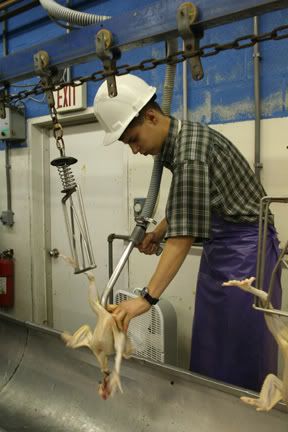
Anything left inside is vacuumed out.

Gutted chickens are then given a cleansing shower.
Still coated in chicken grime, we take a moment to enjoy a little yogurt from a local farm. It's sweet, delicious and better than any of the commercial yogurts I've tried, and it's a nice respite from the massacre we've just been part of. And I do mean massacre. In about an hour and ten minutes, we've killed and processed two hundred seventy five chickens. Sure, that's small potatoes for a processor like Frank Purdue, but for our little crew doing everything by hand, it's been a veritable blood bath.
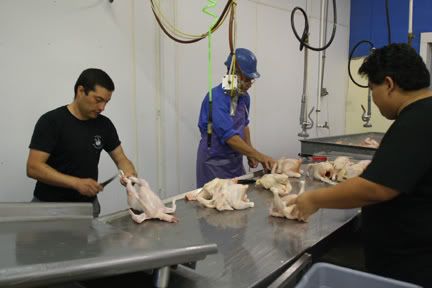
Mariano and I doing "our thing."
Blood bath or not, it was an amazing experience. To see where the food comes from and how it's processed is something that more people need to do. If I had asked, I could have been one of the guys dispatching the chickens by slicing their necks and letting the blood drain out. Next time, I want to be one of them. To know the feeling of actually killing the food. To give it honor and respect for its' sacrifice so that we can live.
Seeing all of this is incredibly amazing. Respect. There's no other way to describe it. From the farmer who raised the chickens and cared for them to this Mennonite family who processes them, it's respect all the way around and now that respect is placed upon us to treat our food properly and respectfully.

No looking back now.


